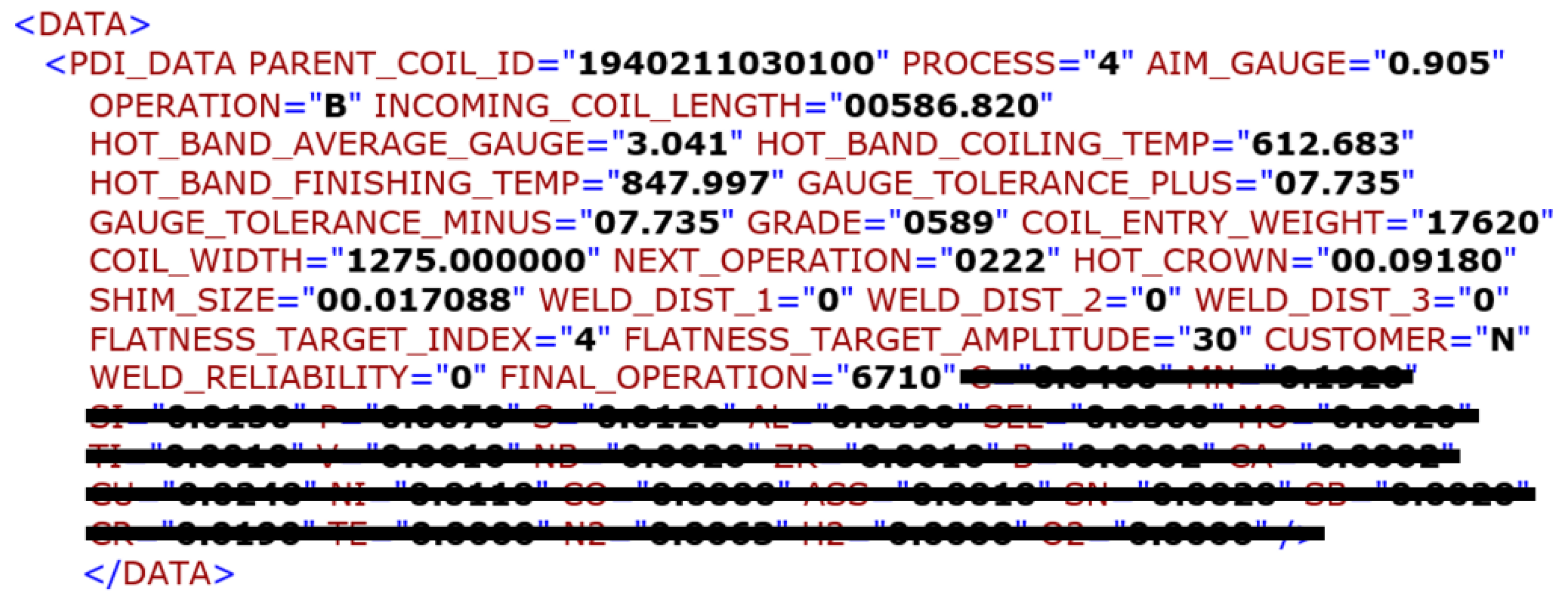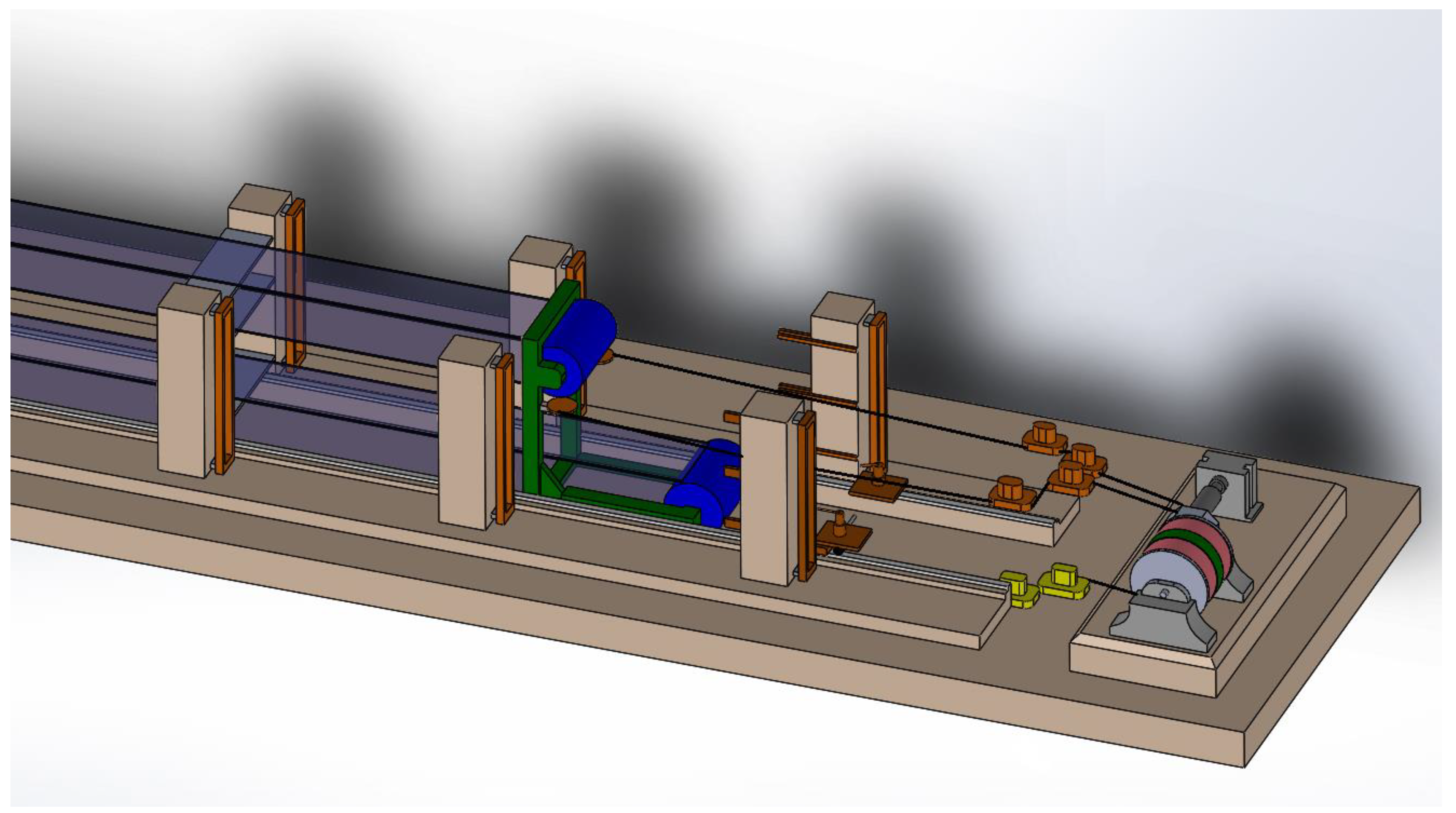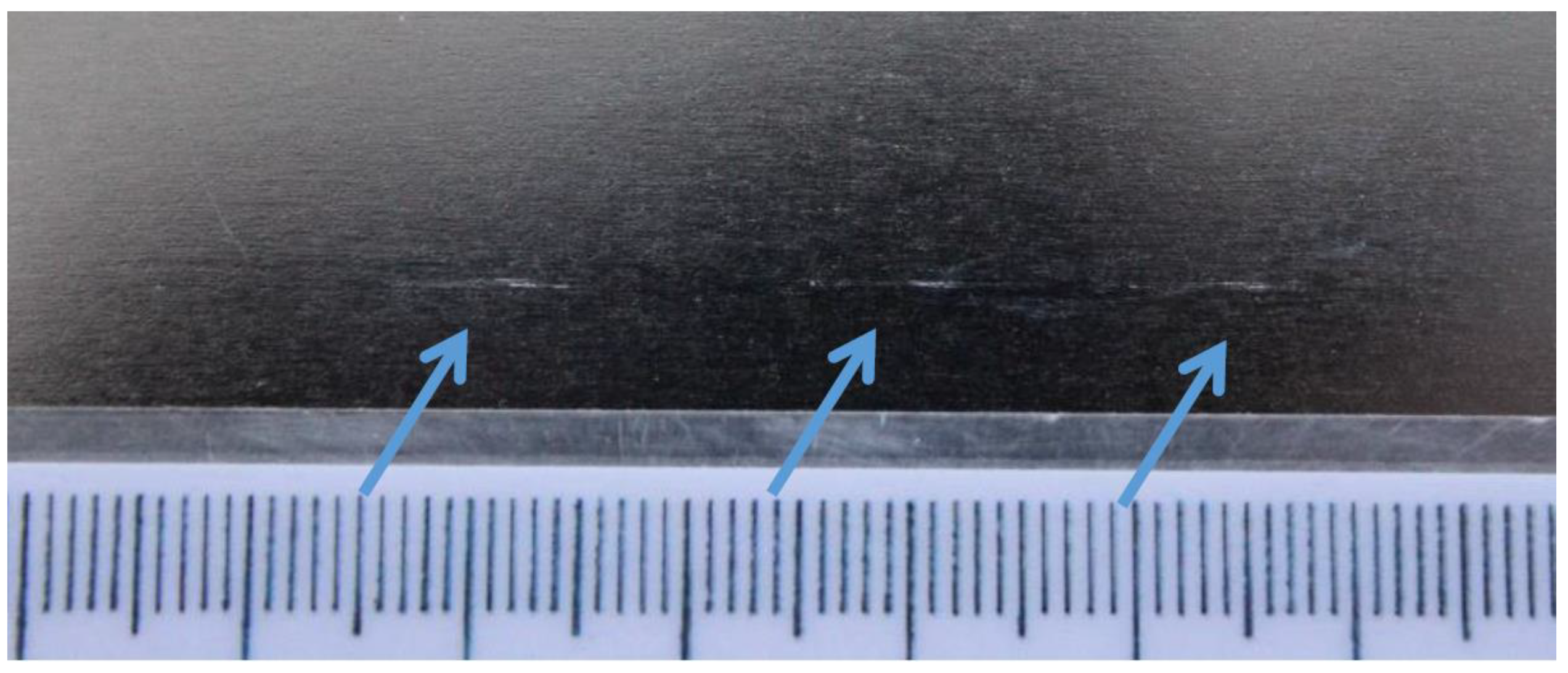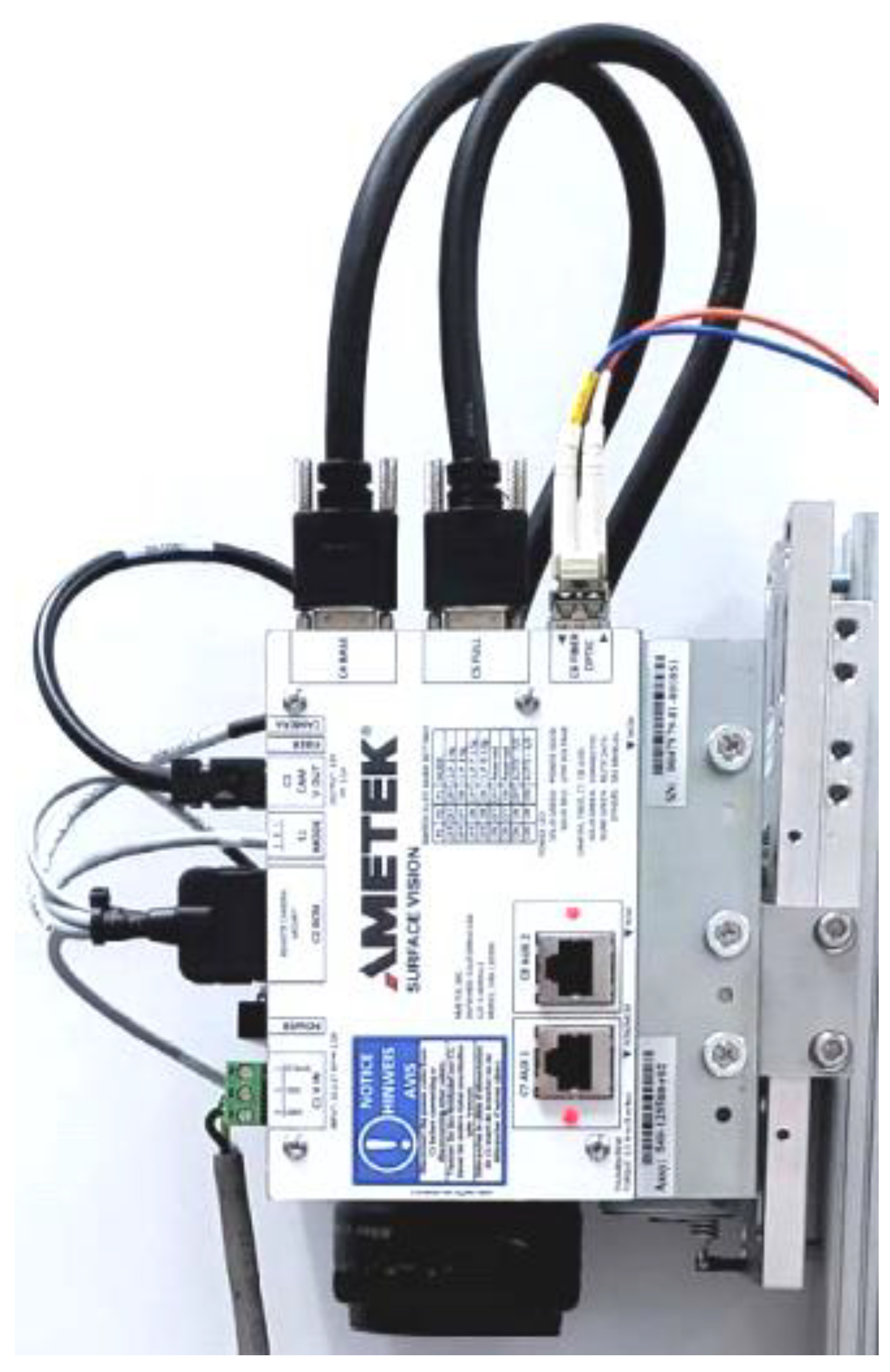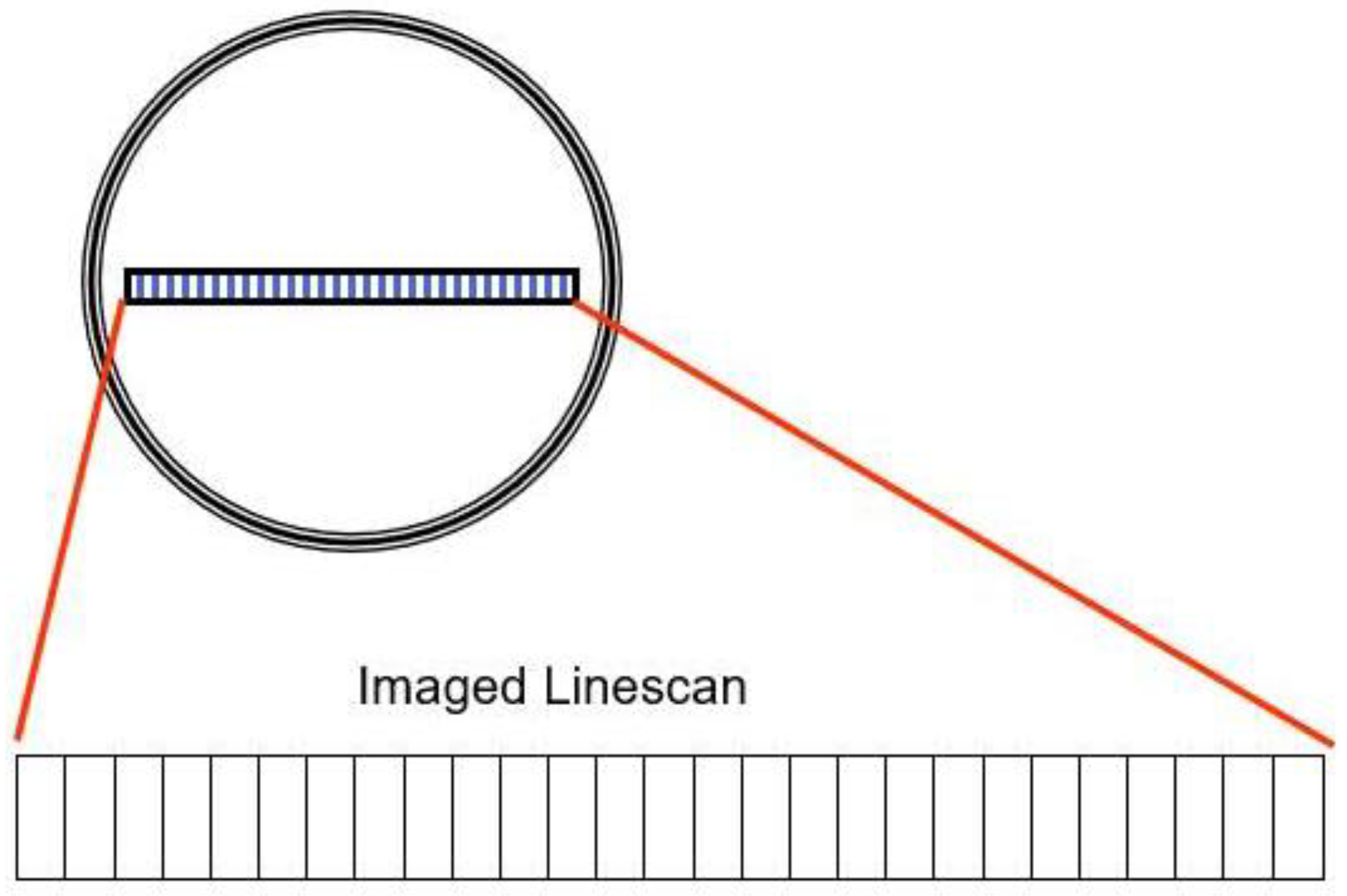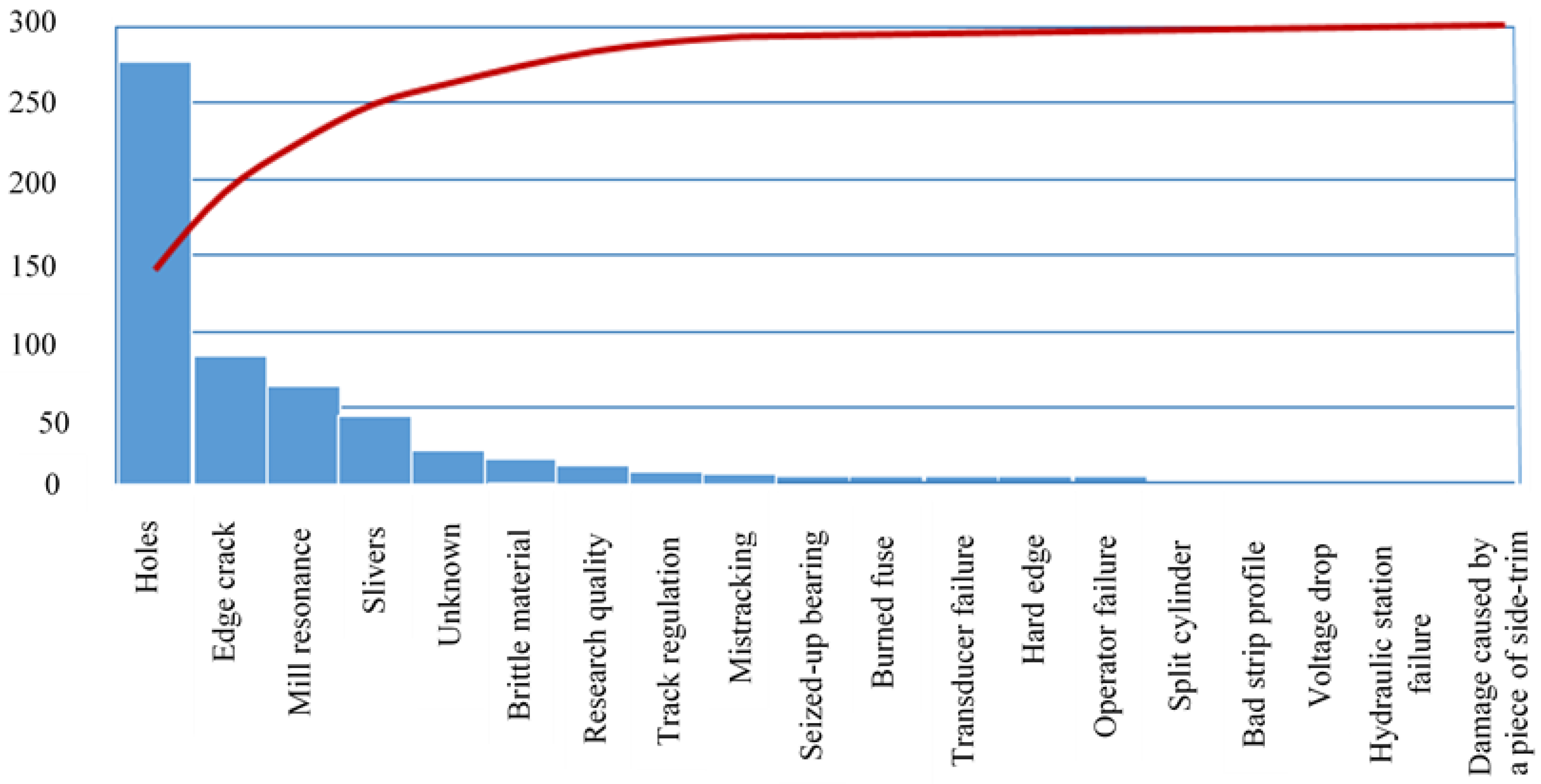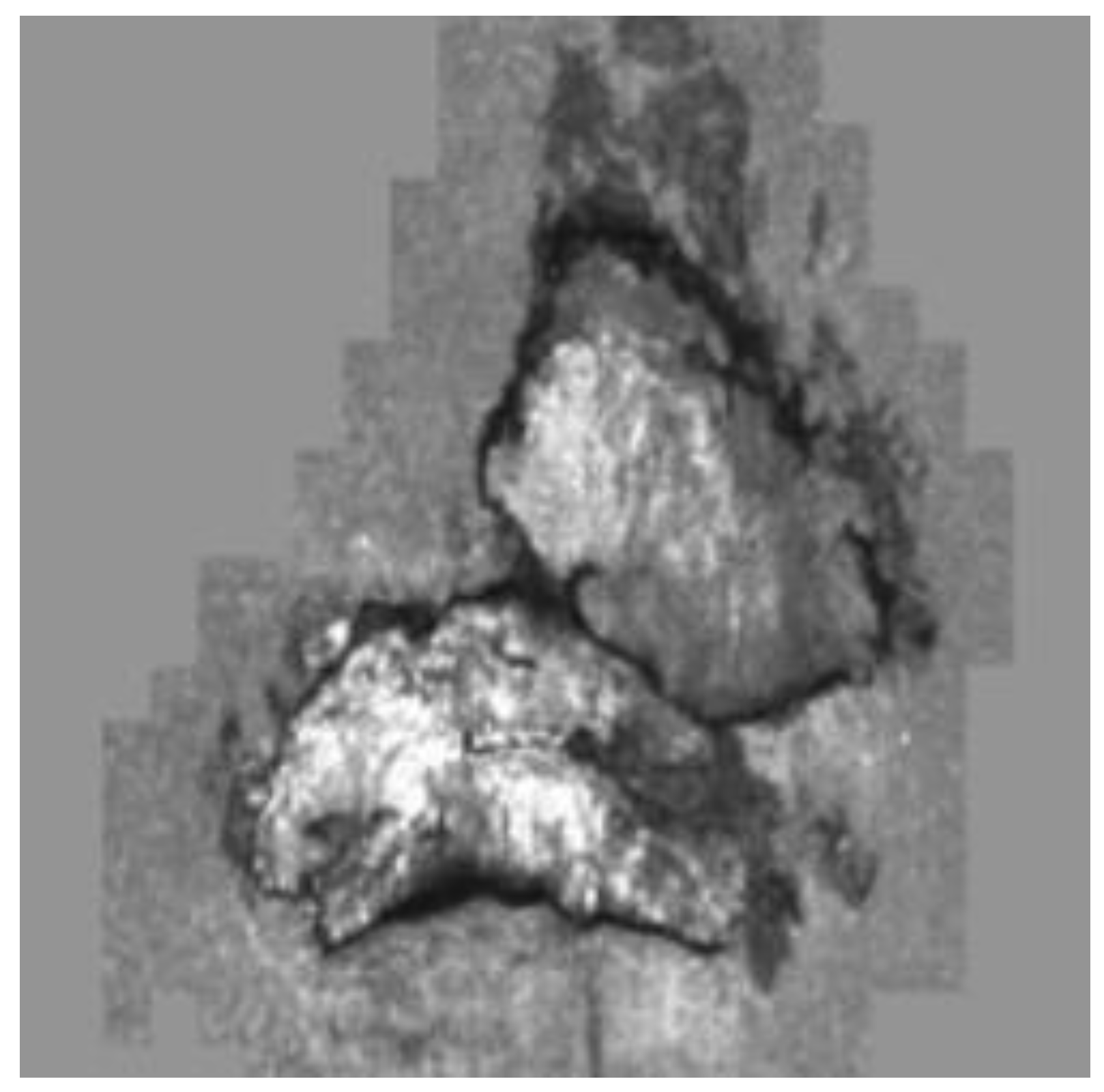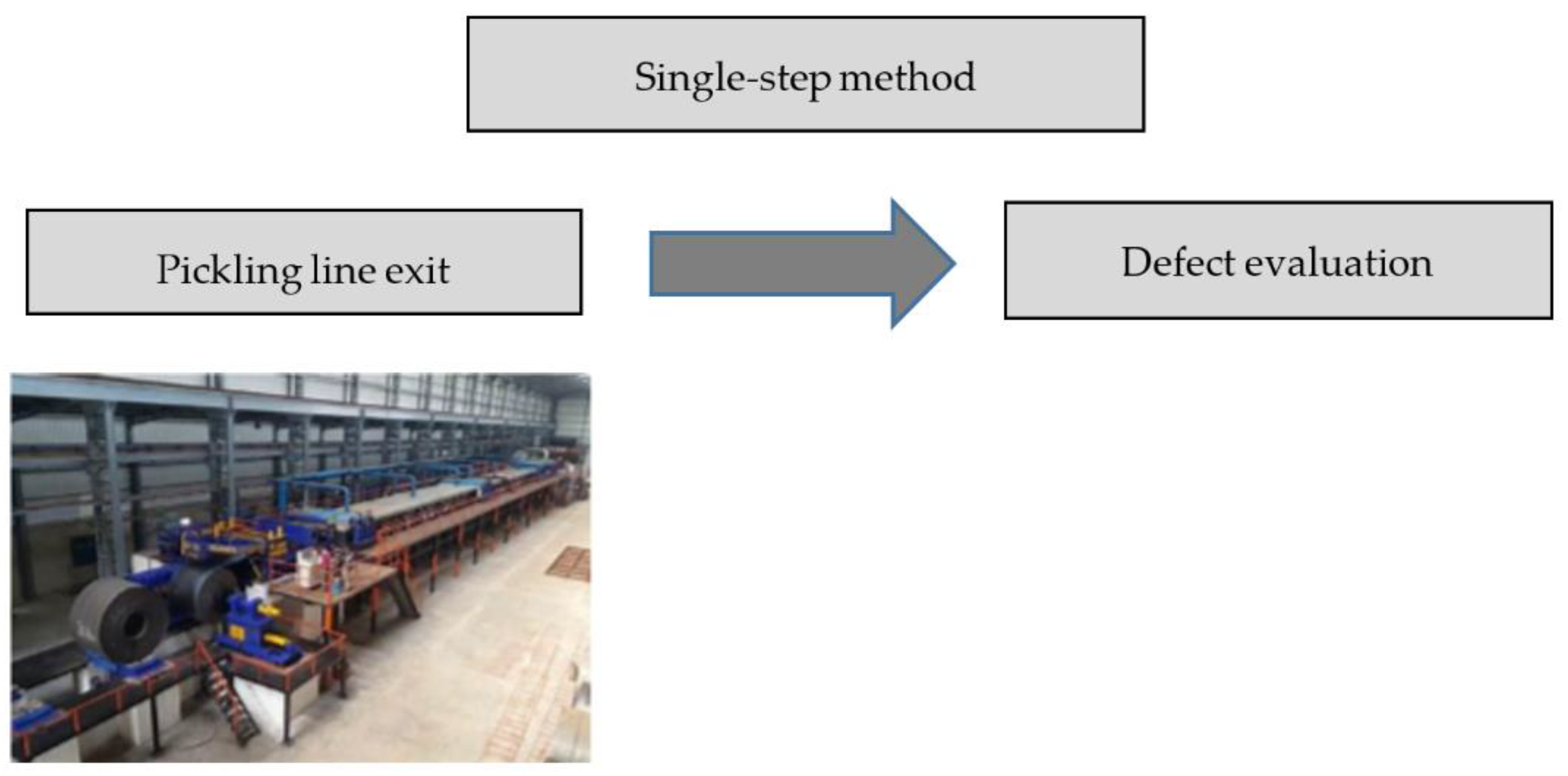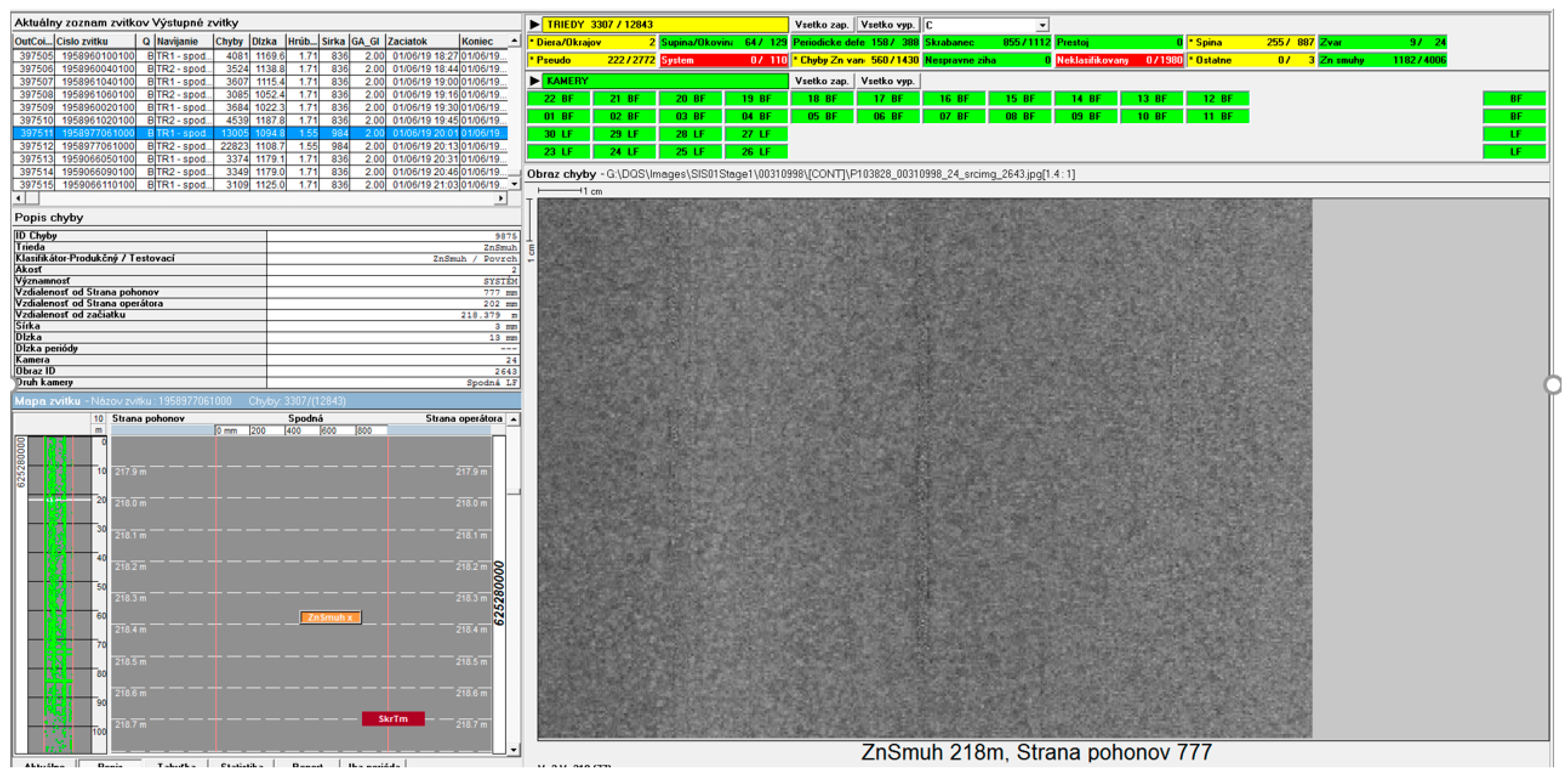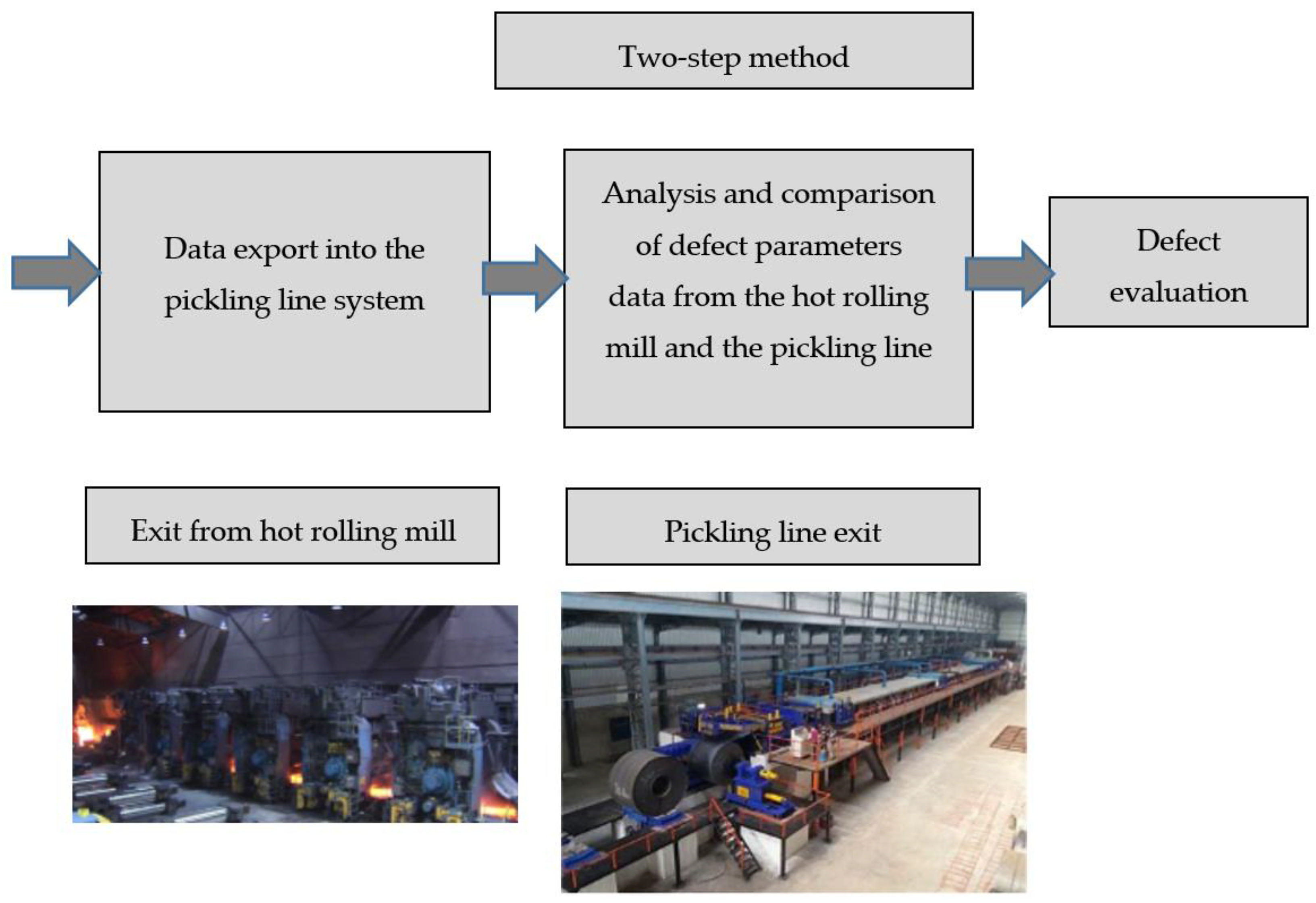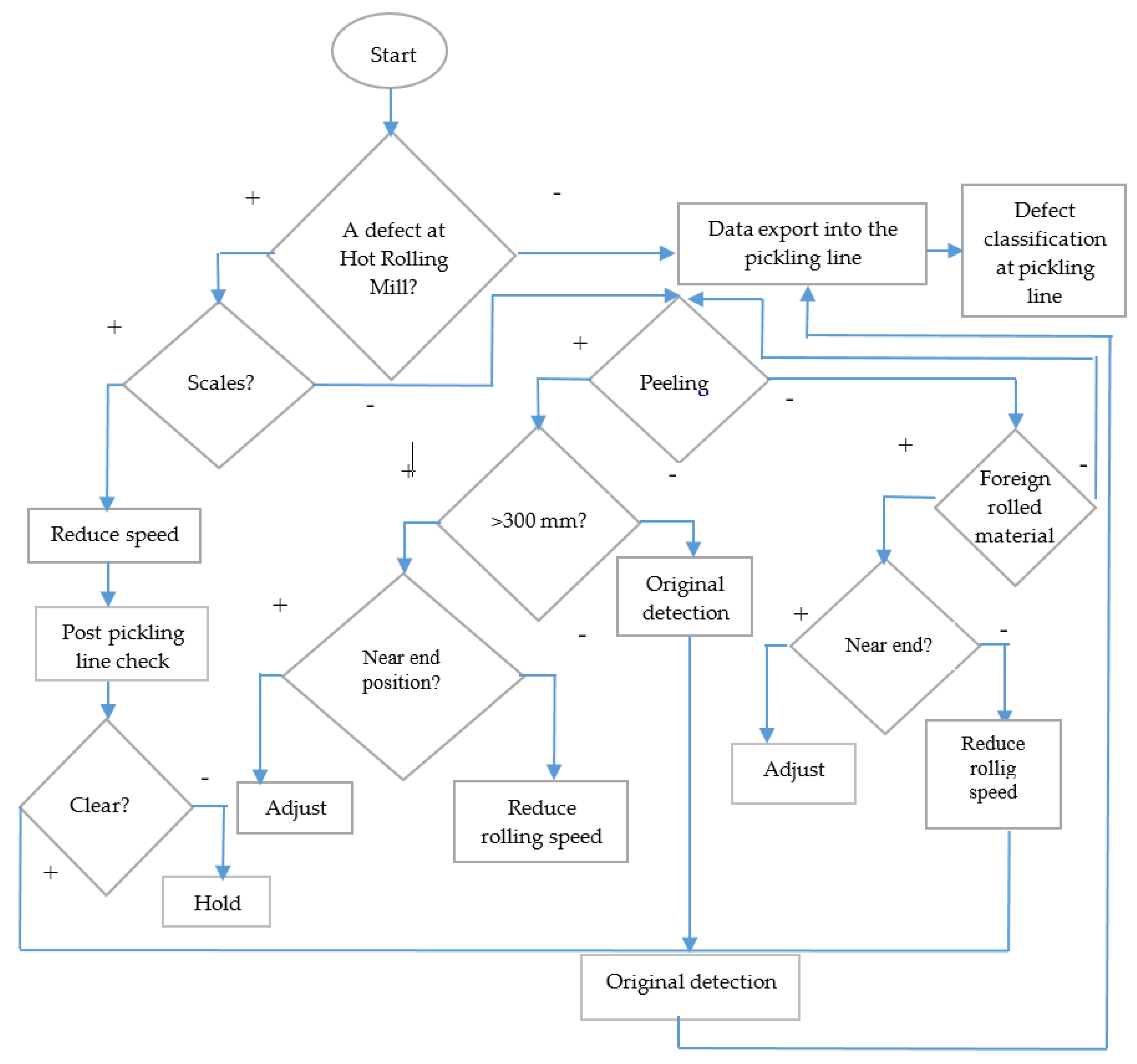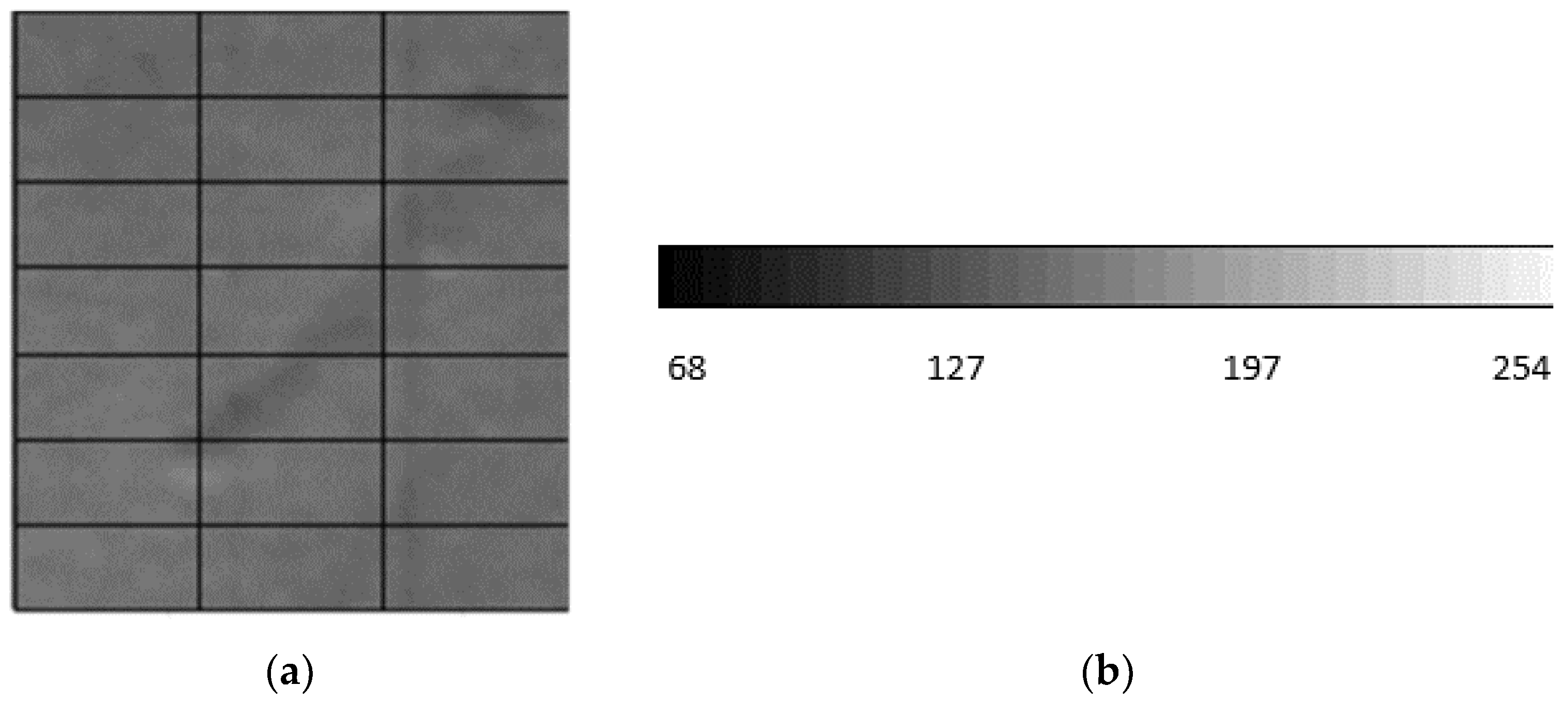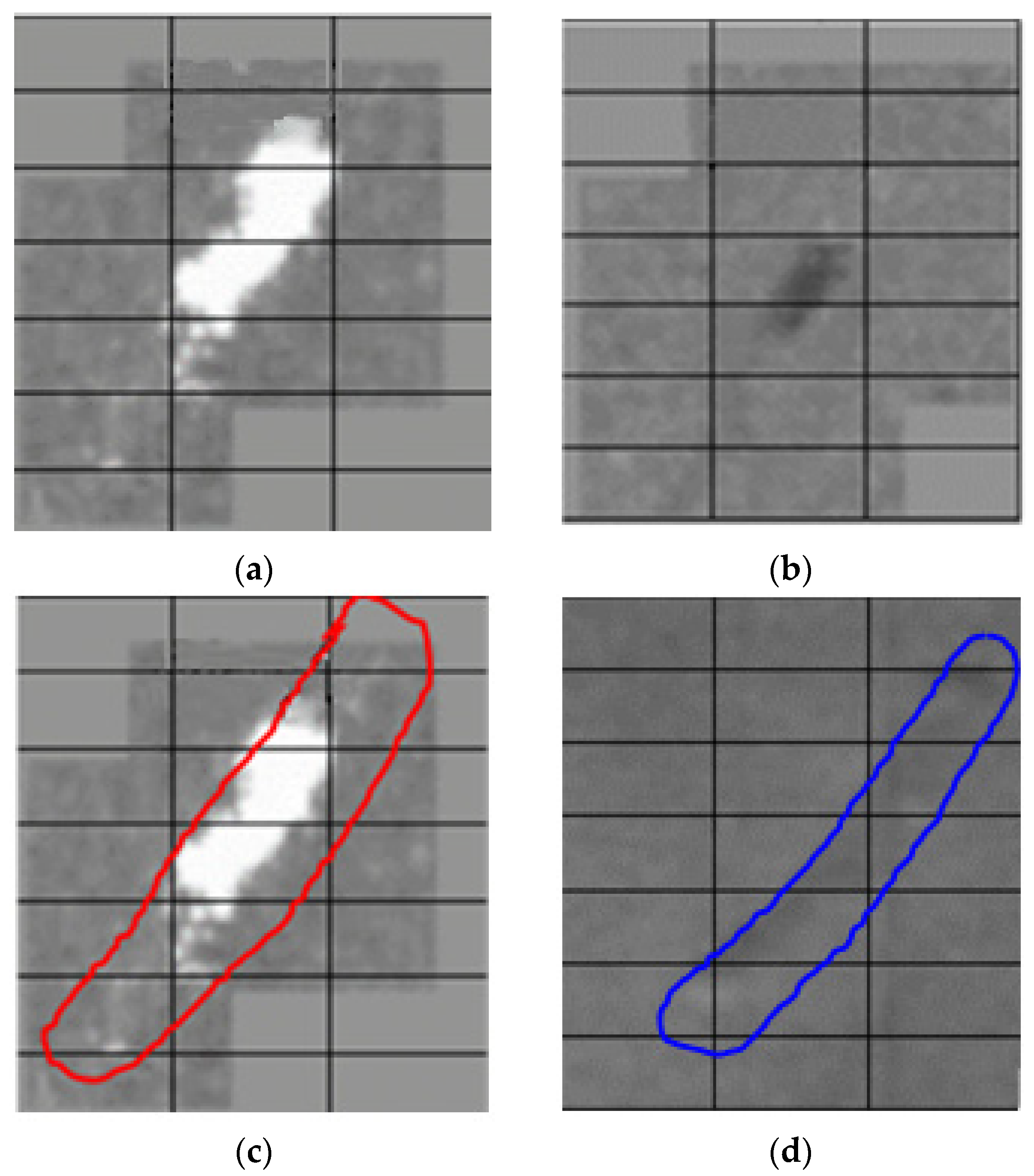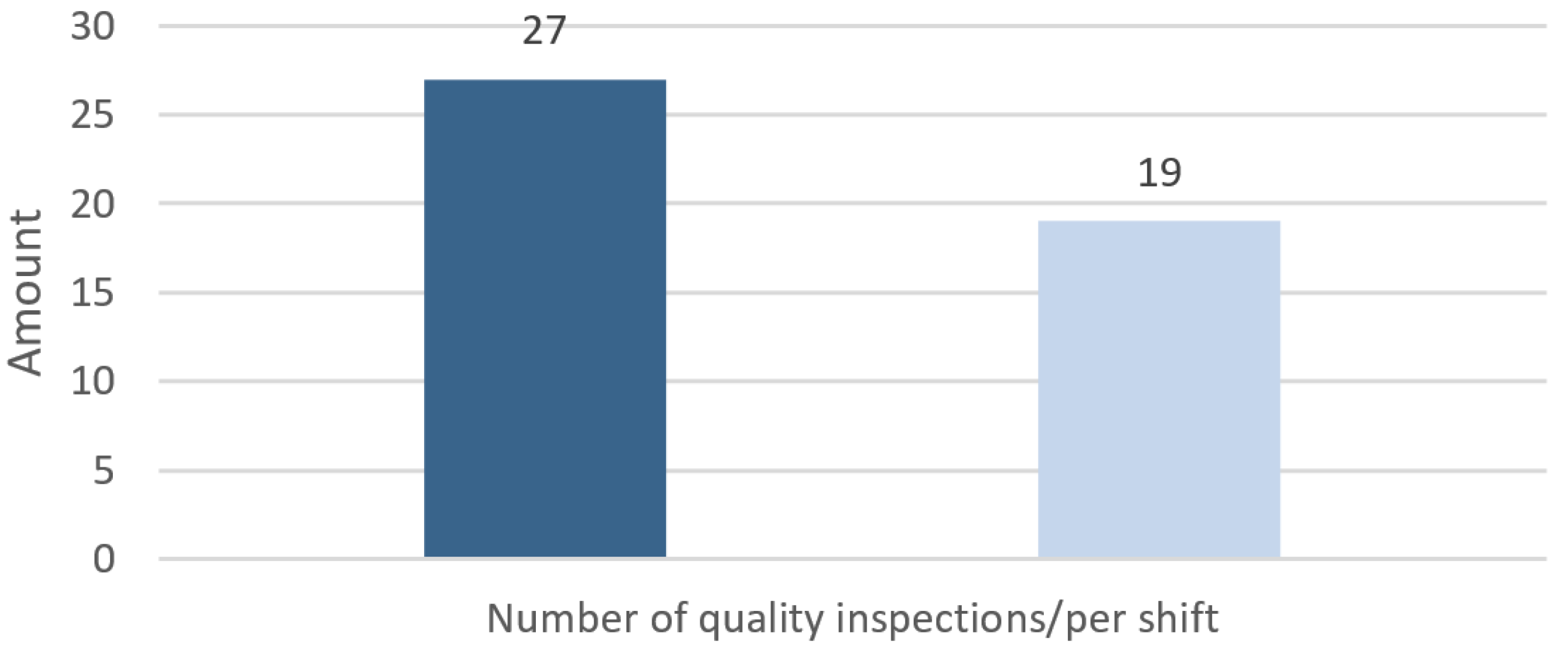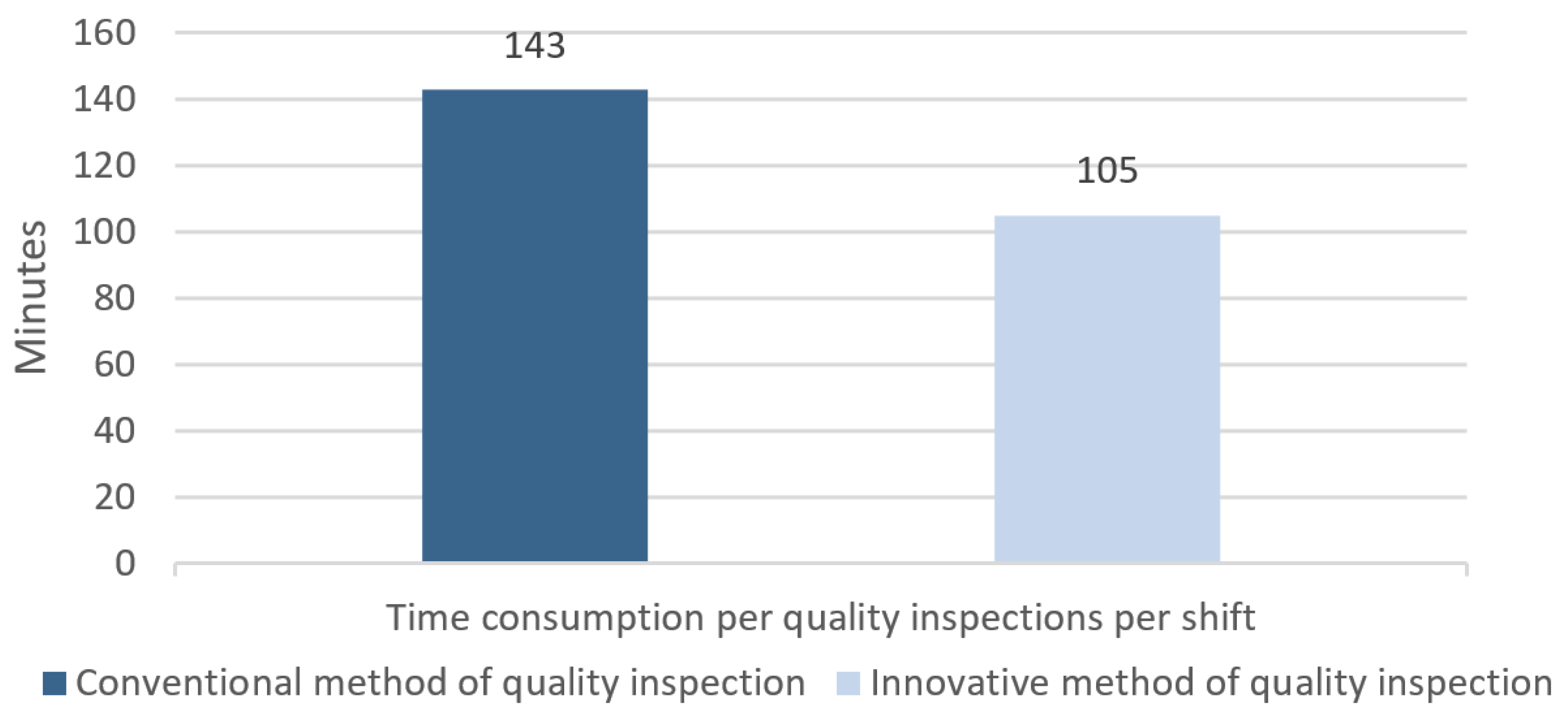1. Introduction
The implementation of the elemental industry 4.0 tools in the metallurgical manufacturing process is taken for granted. These tools apply the specific measurable assignable realistic time-related (SMART) quality assurance principles.
The team led by Samsudin [
1] proposed a method that can be used with the local binary pattern to sort the images into six defect classes according to the most common defects found on the rolled steel surfaces.
Research undertaken by Woo, et al. [
2] looked into the shape defects originating in the flexible-roll-forming process of double-layered slabs made of steel/aluminum. Three slabs of different shapes—namely the trapezoidal, concave and convex ones—were examined for such defects as web-warping, wrinkling, and delamination at the interface. The results showed that web-warping occurred in both single- and double-layered slabs, while only double-layered slabs were affected by wrinkling caused by the compressive longitudinal stress acting on the flange of the convex slab.
Authors Zhang et al. [
3] proposed a new, fuzzy defect detection method aimed at sets. Unlike the traditional methods of defect detection, this method uses a membership function to gauge if any particular grey level may be a suspected defect. The method can show defects with a great degree of precision when combined with pixel connectivity.
Research that was conducted by Liu, L. M. et al. [
4] resulted in a novel classification model that improved the least-squares support vector machine. It has found its application in detecting defects on the surface of steel plates. Experiments have proven this model’s advantage lying in its high speed and a good degree of correct classification, particularly for corrupted defect datasets.
In their research, Lu et al. [
5] examined microcomputed tomography as a validation method of correlating features observed in optical images. They found that features detected on the spot could be matched with defects detected by microcomputed tomography, thus revealing the possibility of using optical images as a means of defect detection, in their case, in the parts that were selected for melting by laser.
Research conducted by the authors Mentouri et al. [
6] employs the method of Binarized Statistical Image Features, which was used in biometrics until now. A higher average rate of recognition has been achieved in this study, namely of six types of defects occurring in the hot-rolling process. The lower standard deviation pointed to its robustness and an acceptable sample processing time. Filters used in this study provide a quite discerning description of images. Data were reduced to include the relevant ones, and the applied classifier proved efficient in recognizing hot-rolled products featuring a defect at an acceptable rate.
The team led by Lu [
7] proposed a method of defect segmentation for discrete Fourier spectral residuals and Gabor filtering image fusion to address the issue of segmenting surface defects on galvanized steel against a complex textural background. The team has demonstrated that the proposed improved spectral residual-Gabor method overcomes the traditional Gabor method in its segmentation accuracy and detection of surface defects of galvanized sheets. The experiment results show that this enhanced method is highly accurate in segmenting the defects and may, to a certain degree, be used as a benchmark method for examining the flaws of zinc-coated sheets.
Four authors, Pawar et al. [
8] used techniques of surface description, namely the Raman spectroscopy and Fourier transform infrared spectroscopy, plus the scanning electron microscopy–elemental dispersive spectroscopy (SEM-EDS), for their analysis of defective versus defect-free regions of steel sheets. They have found that the cold-rolled steel sheets were contaminated by grease at the electrolytic cleaning line (ECL) entry, which resulted in a defect demonstrated as white patches. To prevent such contamination in the future, periodic cleaning and preventive maintenance of plant machinery were recommended.
In their scientific paper, Zhang et al. [
9] proposed a method of feature selection using filtering in combination with hidden Bayesian classifiers. This resulted in improved defect detection and reduced complexity of calculation. The method is capable of selecting an optimal hybrid model capable of accurate steel-strip surface defect classification. The importance of this paper lies in the development of a hybrid model that combines algorithms for feature selection and multi-class classification of steel-strip surfaces.
A trio of authors, Kikuchi et al. [
10] has conducted research into the possibilities of how microdefects, such as cracks, can be detected in steel. Their method of choice was the magnetic flux leakage method. With the help of a giant magnetic impedance sensor, they detected a 100-μm defect through the application of a weaker field. Detection sensitivity was limited by the sensor size and its dynamic range. In addition, a gradiometer consisting of giant magnetic resistance elements was able to detect a defect as small as 30 μm in diameter.
Research by Zhou et al. [
11] presents a model of convolutional neural networks deployed to the task of steel sheet surface defects classification. Unlike other methods, this one is capable of achieving simultaneous feature extraction and classifier design. The experiment on a small dataset, using a small model, has demonstrated moderate accuracy in sheet steel surface defect classification; the average classification accuracy can be as high as 99%.
Li et al. [
12] compiled a dataset of six cold-rolled steel-strip surface defect types, which they augmented to reduce over-fitting. This research team improved the You Only Look Once (YOLO) network and made it all convolutional. The improved network, consisting of 27 convolution layers, is a comprehensive solution to detecting steel-strip surface defects. They applied their network to the six defect types and achieved 97.55% mAP performance and a 95.86% recall rate.
In the research presented by Hu et al. [
13], a classification model based on a support vector machine constructed for the purpose of classifying the defects found in the steel-strip surface images has employed the geometric, the grayscale and the shape features extracted from the combination of the target defect image and its matching binary image. Gauss radial basis was used as the kernel function, the model parameters were selected by cross-validation and a
one-versus-one approach was employed to multiclass classification. A higher average classification accuracy has been achieved by the support vector machine model than by the model based on the classic back-propagation neural network, with an optimal number of hidden layer neurons assigned to it.
Authors Cięszczyk et al. [
14] proposed a method of steel defects detection utilizing a fiber Bragg grating sensor. They have also proved the usefulness of their method experimentally. The defects examined were grooves periodically occurring along the tested steel-strip length. The fiber spectral reflectance properties were measured directly, solving the corresponding inverse problem of establishing indirect defect shape.
In the paper written by the team led by Zhang [
15], the goal was a reduction in the number of sheet steel defects through a change in the operating conditions, specifically in the variables identified as impactful. To predict the number of defects in the casting-rolling process online, a defect prediction model was used as a virtual sensor. Informed by the online prediction of the number of defects, operators can take suitable measures (like changing the operating conditions or stopping the operation if the requirements for the output are not met).
Authors Kang et al. [
16] proposed the steel-strip surface defects be detected by the feed-forward neural network. They proceeded from the premise that any defect reconfigures the arrangement of the surrounding pixels, so they were able to extract the feature vectors in this way. The feature vector size was reduced in the principal component analysis using singular value decomposition. After this, steel-strip defects were detected by the feed-forward neural network.
A trio of authors, Wang et al. [
17], developed an online method of detecting 3D defects based on the photometric stereo. This enabled them to accurately identify and locate 3D defects in sheet steel. For steel passing through at high speed, a photometric stereo laser scanning system was designed for online detection. By avoiding the “pseudo-defect” disturbances, the detection accuracy has significantly increased.
The team led by Sun, Q. [
18] developed a new method for detecting and locating the steel-strip surface defects on the basis of Singular Value Decomposition. The beauty of this method lies in easy and accurate detection and location of common defects. The method reliably establishes not only the steel-strip surface defects but also their approximate location on the strip. This defect detection method is based on direct image processing, without its pre-processing by segmentation or modelling.
Authors Liu et al. [
19] proposed a defect classification method based on deep convolutional neural networks (CNNs). They started with the GoogLeNet base model and added the mechanism of identity mapping for an additional improvement. They also compiled a six-type dataset of cold-rolled steel-strip surface defects and augmented it to reduce over-fitting. They reached an accuracy of 98.57%.
A paper from a trio authors, Suvdaa et al. [
20], described a new framework for steel surface defect detection and classification. This new approach adopted scale-invariant feature transform for defect point detection. Through this algorithm, authors can easily increase the number of training samples for support vector machines. Experimental results demonstrated the efficiency of this approach in detecting and classifying steel surface defects.
Research undertaken by Mancini et al. [
21] described the use of standard and advanced modelling techniques to resolve industrial problems experienced in hot-rolling. To examine defect formation, the material has been first assigned mechanical characteristics. In addition, metallurgical models with the encompassed theory of material damage have been implemented and coupled with FE calculation results for the sake of predicting the microstructural evolution of the ferrite grain structure in the hot deformation process. Results point to defect causation induced by the processing conditions that trigger anomalous heat build-up, which, in turn, induces an uncontrolled grain growth at the edges.
Steel plate defect identification has been tackled by Tian et al. [
22] by means of their improved Extreme Learning Machine algorithm named Genetic Extreme Learning Machine. This algorithm employs certain additional mutation rules that are capable of offsetting the randomization uncertainties of the original algorithm. Experiment results involving nine typical defect samples showed that the Genetic Extreme Learning Machine algorithm effectively improved the identification accuracy of the Extreme Learning Machine algorithm.
A research team led by Xie et al. [
23] came up with a new approach to establishing the size of subsurface defects of metallic sheets by square pulse thermography. The tool of their choice was the oriented gradient of histograms. The ability of the proposed approach to establishing the size of both the distinct and the blurry defects with high accuracy across repeated detections by the square pulse thermography of metallic plates was confirmed experimentally.
In research done by Chu et al. [
24], the authors proposed the sheet steel surface defects be detected through multi-type statistical features and an enhanced twin support vector machine. Dummy boundary samples and representative samples were used to build the classification model. Both the dummy boundary and the representative samples have experimentally proven to improve the accuracy and efficiency of the multi-class classifier. The proposed multi-type statistical features, together with the enhanced twin support vector machine, have demonstrably improved the defect recognition performance in comparative experiments.
Research conducted by Liang et al. [
25], addressing the sheet steel surface defect classification, proposed an SP-DenseNet framework of classification based on the combination of self-paced learning and DenseNet. To detect the surface defects occurring on sheet steel, a special self-paced process has been designed. To successfully address the quality problem, the framework draws on the concept of self-paced learning that makes the detection results more reliable.
Aspects of a fast-moving object’s macrostructure digitization are analyzed in paper [
26]. In addition to particular imaging equipment features, the authors also explore the options for recording the geometric surface profile. An important parameter subject to examination was to record the surface deviations with sufficient precision and the ability to process the obtained digitized data in the group for optical metrology (GOM) inspect software for surface analysis.
The substrate entering the manufacturing process, i.e., the rolls designated for the rolling process according to the technological requirements, is currently not accompanied by the data from the preceding production processes in digital form, enabling its evaluation by the rolling process control system. Records of the preceding process come as the accompanying documentation in printed form is processed by the team manning the production line. This documentation contains records of eventual defects found in the production of the given roll, evaluated in the Hold System. The role of this system is to intercept those rolls in the production process that deviate from the required quality parameters. When these deviations are removed, they are released from the Hold System for further processing.
A high-precision production system generates massive data flow [
27]. It is necessary to organize the sorting and mutual communication of this data. In this case, the data is divided into three essential levels based on its generation, direction and the information it contains:
Level A—represents data obtained directly from the process, and processed in the processing system, via sensors, readers and related instruments.
Level B—ensures that the technical requirements are met, the process requirements are transferred to the process. It reads, monitors and controls physical processes.
Level C—provides output for checking the processes, enables their analysis in the production flow. Its purpose is to function as the production qualitative parameters tool.
It is usually possible to use a variety of virtual models at the general level of the production system control. Becoming an ever more important aspect of production is the issue of project management optimization. To illustrate the point, let us present at least one example [
28].
The presented two-step defect verification system in metallurgic manufacturing is innovative compared to conventional methods of quality monitoring. The surface quality is evaluated in the direction of defect confrontation detected on the strip surface in two subsequent manufacturing processes. First, in the hot-rolling process and subsequently at the output from the pickling process. Defects detected and classified on the hot strip surface are eliminated in the pickling process in some cases, which is why they do not pose a risk in production flow at a later stage. For example, in the rolling process, when critical defects remain on the strip surface, it is necessary to reconsider the further processing of such strips.
The conventional surface defect evaluation process did not examine the correlation between the surface defects of two consecutive manufacturing processes. Likewise, the option of eliminating negative influences on the final product and eventual failures caused by those defects have not been examined either. As an example, strip rupture in the rolling process and many other critical events in the final production aggregates may be cited.
1.1. Production Systems Communication Interfaces
An ISA-95 standard [
29] has been developed for global manufacturers, which is applicable to the systemic communication of the automated interfaces in different industries and industrial processes, suitable for many continuous and repetitive industries and process types. This is usually the case for high-volume flow production.
This standard enables the transfer, implementation, and production process management in accordance with the client’s order. Purchase contract information, individual technological parameters, and support processes are implemented at the respective levels of the manufacturing process:
Level 0—defines physical processes
Level 1—smart devices which read and control physical processes
Level 2—control systems software manages the process in real-time, using a mathematical model
Level 3—production support control data, its function is to support the production control
Level 4—production process logistic control of the data flow
1.2. Digital Imperfection Registry
The digital imperfection registry records the deviations from the prescribed parameters in digital form [
30]. They are created at the moment of casting the slab in the continuous slab casting works and accompany the slab throughout the production process, all the way to its shipment. The slab digital imperfection registry data contain records of each production operation, and they are relayed to the production equipment’s control system. Based on the incoming data, the production equipment ensures the process settings meet the required parameters, taking into account the eventual deviations from the required parameters of the incoming substrate. The goal is to eliminate deviations during the course of the process and to achieve the parameters expected. The incoming rolls’ imperfection data enters the entry looper together with the batch of incoming rolls. The data is continuously evaluated, and a quality control frequency calculation is made from defect indications on the rolls designated for rolling. The process of quality control frequency calculation (1) takes into account the following correlation:
The number of rolls that enter the process and are put on hold;
Defect severity;
Empirical coefficient (a coefficient know from practice; it evaluates the consequences of a defect evaluated in the past);
The unit of calculation is the number of quality controls per roll designated for rolling.
FQC—quality control frequency, i.e., the number of rolls that pass down the line until the next roll inspection [number of rolls/control]
M—Multiplicity—the number of defects occurring per 10 rolls entering the process, which means the number of defects found in the batch of 10 consecutive rolls entering the rolling process. [number of defective rolls/10pcs]
S—Severity—the severity of the defect on the strip, ranging from 1, which is the least severe defect, all the way up to 10. [dimensionless number]
EC—Empirical Coefficient—practical coefficient represented by a value obtained from past experience. If the defect caused a small number of ruptures in the rolling process in the past, 0.1 is used. The value of 0.2 is selected for moderately common ruptures, or 0.3 is used as the highest value representing frequent adverse consequences in the attempt at reworking the roll (dimensionless number).
The example describes the calculation of the FQC for ten rolls with defects and defects that are critically severe. However, this is done under the assumption that these defects were successfully eliminated in the rolling process on the respective line. We enter these conditions into Equation (2).
where:
multiplicity = 10 [number of defective rolls/10pcs]
severity = 10 [dimensionless number]
empirical coefficient = 0.1 [dimensionless number]
It follows from the result (2) that under the stated conditions, it is appropriate to carry out a detailed inspection of every fifth roll.
If the result of the roll’s quality control is negative, the strip continues to the rolling process without a corrective intervention. The next quality control calculation takes place after the designated number of rolls has undergone the rolling process.
Should the quality control yield a positive result, the rolling mill operators embark on corrective measures to remove the source of poor quality (e.g., roll replacement). When the source of the poor quality has been replaced, quality control is conducted to check the effectiveness of the corrective procedures. At the same time, the system of calculation determines the subsequent number of the rolls undergoing the rolling process before the next inspection.
The defect detected by the quality control is logged into the digital roller imperfections registry. Two processes take place simultaneously. The first is entering the defect in the Hold System, tracking it all the way back to the last quality control. The second process, the SMART control system, charts the most suitable course of the detected defect’s further processing.
1.3. Predictive Quality Control in the Strip Pickling Process
The hot strip parameters’ divergence from the reference parameters has a crucial impact on the pickling process. The hot strip’s exposed parameters are the following:
strip geometry
surface defects
mechanical properties
deviations in dimensions
The hot strip geometry has a critical effect on guiding the strip in the pickling process. The strip guiding in the pickling line has a crucial impact on the pickling line’s performance,
Figure 1. Should the hot strip geometry be non-compliant, there is a probability of the strip’s yaw during the pickling process, and undesirable events, such as the strip’s rim damage, may occur. The strip rim damage is inadmissible, as it may result in the strip’s rupture in the pickling process, and, in addition, a damaged strip rim poses a high risk in the subsequent production process, mainly during that of the cold rolling. The pickling lines feature a device that keeps the strip aligned with the line axis. These devices normally ensure that the strip maintains the desired position on the line. If the hot strip’s parameters diverge significantly from the reference parameters, a situation involving the strip yawing from the safety zone may occur. The consequences of the strip’s yaw are highly undesirable, as shown in
Figure 2.
High-performance continuous pickling lines feature loopers,
Figure 1, enabling continuous high-capacity strip pickling. Deviation from desirable geometry poses a risk. The highest risk is exactly in those loopers. The loopers follow the motion of the looping wagon, moving in the looper space, which results in the strip hanging over between the steering roller and the looping wagon. The strip’s position on the looping wagon is directly proportionally correlated with the strip’s distance from the steering roller and from the separators’ geometry. The default setting of the separators’ geometry matches the reference parameters of the hot strip geometry. If the hot strip geometry diverges, the strip yaws in the looper.
This adverse phenomenon under scrutiny may be eliminated through reduced looper load. If a strip with unsuitable planar parameters is processed and there is a heightened risk of the strip yaw in the pickling line, a SMART production requires data to be imported with the parameters’ level of deviation from the reference values of the strip geometry and the strip’s down web-position.
A PDI data telegram in
Appendix A is uploaded from Level B, and it includes the standard data in addition to the descriptive data of SMART production. It is necessary that it also contains the data on the strip’s planar divergence, as discussed above. Based on the Level B data, the Level 1 control manages the production process for performance optimization and the minimization of the risk of rupture in the production process. This predictive system regulates the looping wagon’s position, basically correlating with the planar deviation level. The planar deviation culminates in time synchronization of the wagon’s position and the critical strip position. The aim is to minimize the looper’s load. This significantly reduces the probability of a critical event due to a looping wagon failure.
1.4. Surface Defects
The pickling process surface defects may be divided as follows:
Defects entering the pickling process emerge in the processes preceding the pickling process. Crucial to the pickling process are the defects that emerge in the process of continuous slab casting and in the hot-rolling process. To satisfy the basic notion of predictive production management, data transfer between individual production processes in the production flow is crucial.
The continuous slab casting also gives rise to defects that can be eliminated, or their adverse effects can be significantly reduced in the subsequent production flow, subject to their detection, monitoring, and removal in the suitable process operating during production on the various machinery. Defects emerging in the process of continuous slab casting are the following:
Defects emergent in the process of slab casting tend to change their shape and position in the hot-rolling process, thus making it possible for the defects to submerge under the strip surface and give rise to a latent characteristic. Such latent characteristics pose a risk in the subsequent processes, e.g., a failure, and of course, it significantly affects the finished product quality.
The following defects emerge in the hot-rolling process:
Scales
Scale scars
Imprints
Pincher
Innovative project methods of metallurgic production lines predictively calculate and project data flows. They do so in conjunction with the flow of material and the transfer of particular divergencies in quality in order to eliminate the latter in the subsequent flow. It is exactly the pickling process that necessitates that surface defects, emergent in the hot-rolling process, and all their respective parameters, be precisely defined as follows:
Defect type
Position
Recurrence
Scale
Data were distributed based on the defect parameters’ exact definition in the PDI telegram,
Figure 3, and the pickling parameters were set accordingly to eliminate the defects. The pickling process makes it possible to eliminate some, but not all, of the defects from the preceding processes.
Rolled-in scales emergent in the hot-rolling process may be eliminated if the pickling process speed is reduced. The PDI telegram,
Figure A1 in
Appendix A, transferred to the pickling process, contains exact data on the scale’s occurrence position. It is required that the pickling process speed be reduced at the place of the scales’ occurrence. At the same time, the pull breaker parameters are exposed, causing disintegration of the scales layer, thus increasing the pickling process efficiency. The elimination result is checked at the output from the pickling line via a camera system.
